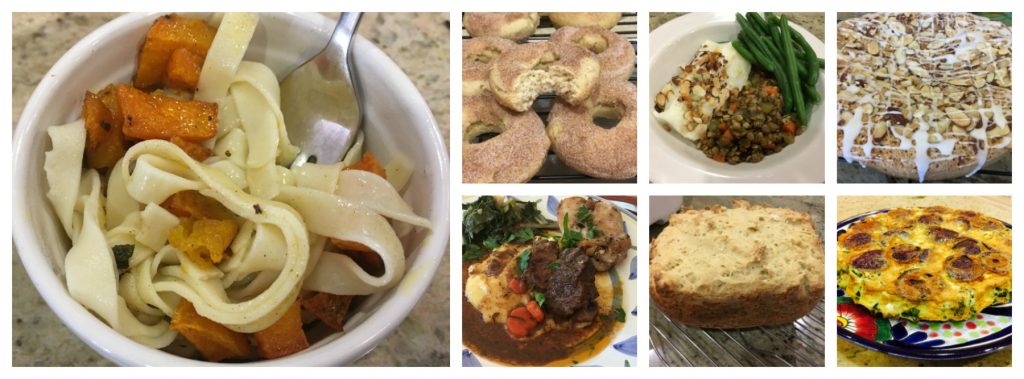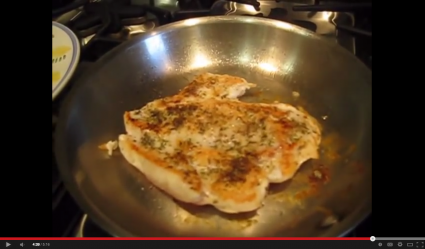I am motivated to help you. I want to be able to dine out safely with my family in more places. That is why I wrote this guide to gluten-free resources for chefs.
In the past 5 years, the number of gluten-free diners has increased exponentially. Between the diagnoses of celiac disease being on the rise and number of people who are gluten intolerant, we realize the world of food is changing. It might be because food has changed so much over the past 50 years, our immune systems are on overload, genetics, pesticides, or any combination of reasons. I call it the million dollar answer. Regardless, to stay current, offering gluten-free menu items is a smart idea. Offering gluten-free items safely should be a requirement.
If you use the phrase “gluten-free” on a menu, according to the FDA, you are telling your customers your food is safe for them to eat or under 20 parts per million (ppm); that is a really, really, really small amount, like a crumb of a crumb. How to do that is most likely within your reach. You just need to know the requirements. Some chefs may not think it’s possible but for others, they are proactive about the challenge.
This is what you need to know: Educate yourself about what gluten is, which ingredients have gluten including those you would not expect like cornmeal, how it can get into other foods through cross contact, and which substitutes to use (see below for more information).
I didn’t really have a choice; I had to learn how to cook gluten-free for my daughter. I started teaching cooking classes so others could learn from my successes (and failures!). One day, I decided to walk in the shoes of the customer and eat gluten-free for 2 weeks, something I suggest to anyone trying to understand someone else’s perspective. Much to my surprise, 4 days into my experiment, I realized I had what I called a sensitivity to gluten. My symptoms without gluten were minor but I felt so much better that I stuck with it. That was 8 years ago. I learned a few things since then:
- I should have been tested for celiac disease immediately while I was still eating gluten. I won’t go back now as I don’t think my body could take a day of eating it, let alone 2-4 weeks. I do know I am a gene carrier. That’s enough for me.
- You can still have celiac disease or a gluten intolerance with minor symptoms. Celiac disease is not fun. I went on to educate myself about the disease, the symptoms, and the repercussions of not being diagnosed. Did I mention I have been gluten-free for 8 years? That is why. And I never cheat because it’s not worth it to me.
- There are a wide range of diners. Don’t judge them. Some people cheat and some people don’t. Treat them all the same. It will happen and just chalk it up to human nature.
- I didn’t know as much as I thought. I am continuing to learn about hidden sources of gluten. There can be cross contact of items before it even gets into the kitchen. Be open to learning and gracious. After getting someone sick, a chef said to me “I didn’t know malt vinegar had gluten in it”. I had another chef swear up and down that a California roll was gluten-free. I asked them nicely to look at the ingredients of the krab stick/imitation crab. Yup, gluten is one of the main ingredients (wheat starch, usually) to hold it together.
- Cooking gluten-free is not as hard as it seems. Many of us are tied to our craft, refusing to change how we make a roux, cake, or a roll. Try to not be stubborn. Small tweaks to a recipe can give you results that should be indistinguishable.
So let’s get to the meat of this now, shall we? Here’s a good start:
What is gluten? What are sources of gluten?
What is cross contact (aka cross contamination) in a kitchen?
How can I eat out safely?? What customers think about.
What are common concerns of a gluten-free diner?
To start, you probably need a flour replacement. You can use my DIY recipe here for Amy’s Gluten-Free Flour Blend or buy packaged gluten-free flours. It’s important to know when to use a flour blend with gum, without gum, and/or with other ingredients like sugar or baking powder (usually known as a baking mix). The packaged mixes I like are King Arthur Flour, Trader Joes (both without gums), Bella Gluten-Free, Jules Gluten-Free, Pamela’s, or Bob’s (with gum). There are more here.
I wrote my book The Warm Kitchen for home cooks but have had a number of chefs and bakers use it for their businesses. You may use a discount I provide to people who attend expos. You can find that here. I discuss how to make baked goods, sauces, breads, pizza, etc. For a $25 investment, you will learn a lot.
Once you have some of the basics, get in the kitchen and start testing. Try things out on your staff and friends. Find a gluten-free advocate in your community like a blogger or someone who heads up a support group. Get feedback. Once you think you are ready, social media can be your friend.
Have you found these gluten-free resources for chefs to be helpful? Please share it. If you think you might need more help, I’m available for consulting either over the phone or in person.
Thank you and go have some fun in the kitchen!



